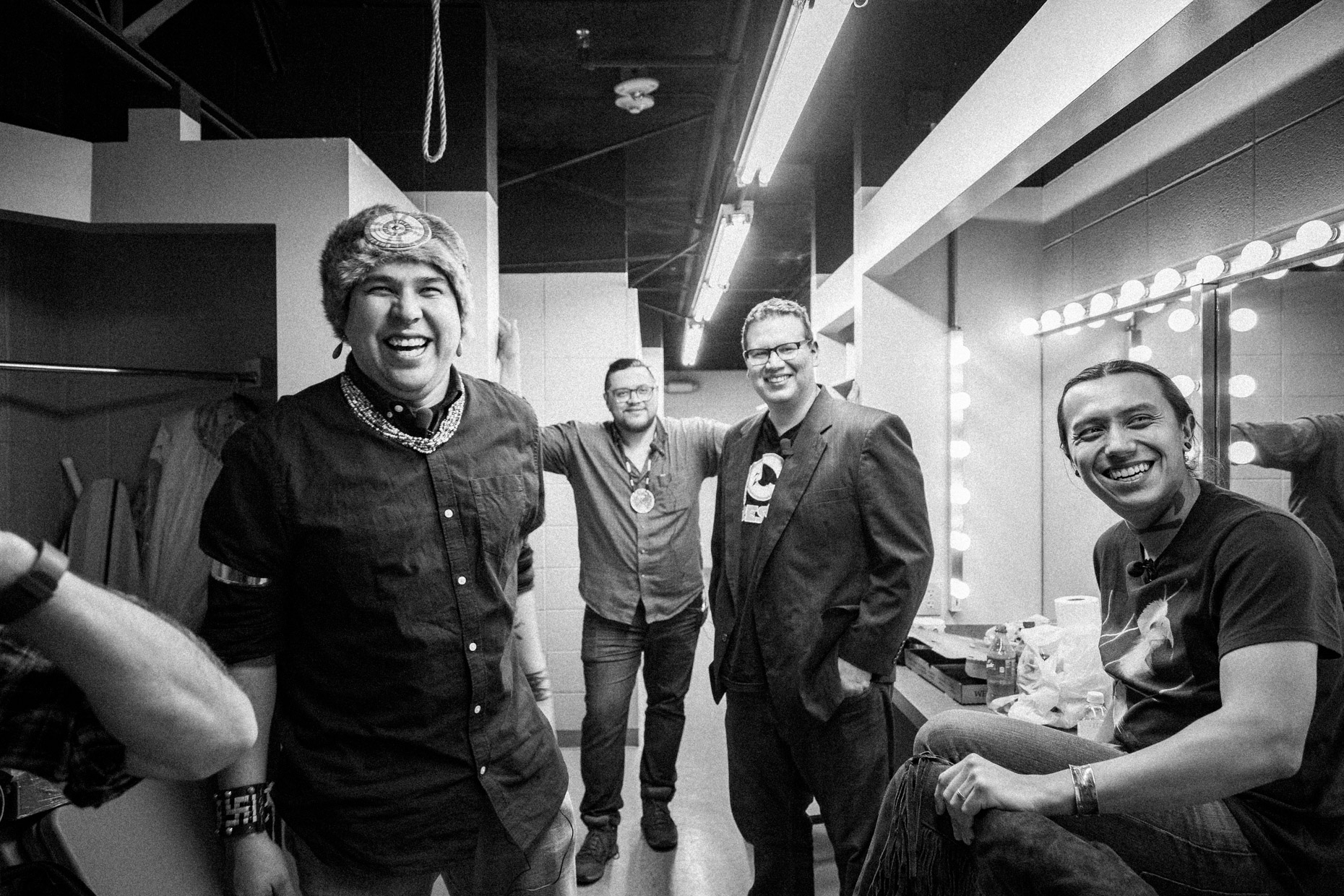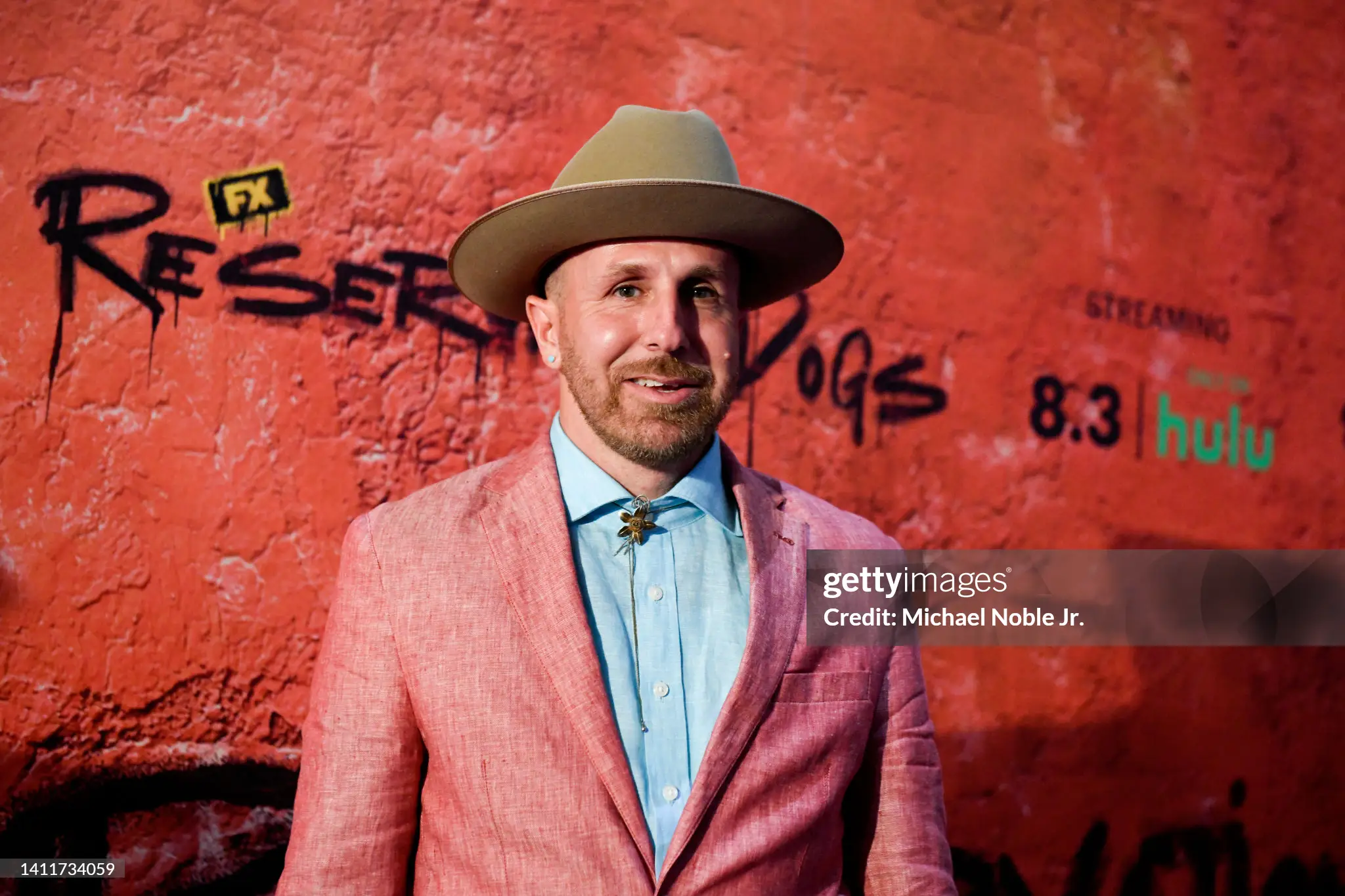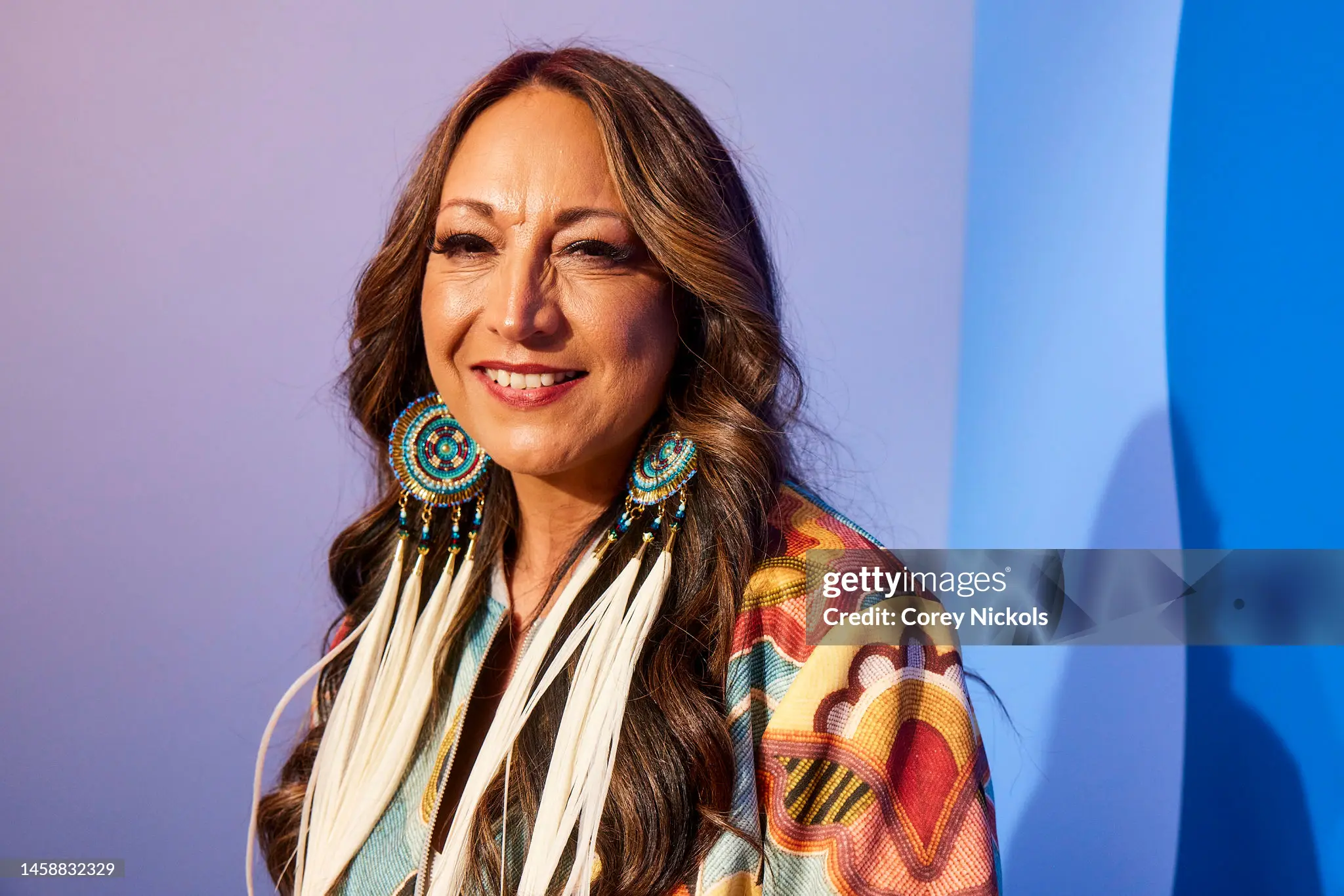By Caty Borum

Native comedy has been around since, well, the beginning. The roots of Native humor are deep and structurally meaningful—and well-known in Native communities. In his pathbreaking (and very funny) 1969 book, “Custer Died for Your Sins: An Indian Manifesto,” the attorney, activist, and former National Congress of American Indians executive director Vine Deloria Jr. (Standing Rock Sioux) was one of the first to write about Native humor.
Humor in Native culture, according to Deloria, has never been simply about entertainment and fun, but about governance and organizational styles and getting things done — but also, an irresistible response to absurd levels of tragedy. In his book, he recalled singing “My Country ’Tis of Thee” at a Native conference and the room breaking into laughter as they realized that their fathers most certainly did die at the hands of the Pilgrims — a hilariously dark twist on the lines “land where my fathers died … land of the Pilgrims’ pride.”
Comedy, not surprisingly given its structural functions in Native communities, is also found in Indigenous activism. In 1969, in one of the most successful and well-known contemporary Native-led uprisings, activists seized control of Alcatraz Island, occupying it for months and demanding rightful land be returned as the 1868 Treaty of Fort Laramie had promised. As attention grew and allies and Natives arrived on-site, the poet John Trudell (Santee-Dakota) “wrote a satirical manifesto that conveys the feelings of the occupation,” as Kliph Nesteroff wrote in his book “We Had a Little Real Estate Problem: The Unheralded Story of Native Americans and Comedy.” Trudell was rewarded for his efforts with an FBI file that said, in part, “He is extremely eloquent — therefore extremely dangerous.” Humor was embedded in the resistance itself.
Cut to Native activism in the present day, where Crystal Echo Hawk, IllumiNative, the 1491s, and a network of Indigenous artists are fighting cultural invisibility and structural oppression, and, in its place, asserting their identities. They are focused both on the power nucleus of Hollywood and on making and disseminating their own stories, using the participatory media tools of the digital age, striving to change the image and treatment of Native people by disrupting the narrative created by others. Comedy is meaningful here, too, says Echo Hawk: “There are times in our communities when we really faced some incredibly difficult challenges, and there are moments where dark humor is alive and well because it’s sometimes just the way that we cope. It’s the way that we are expressing our resiliency.”

Ryan Redcorn
As the 1491s’ Ryan RedCorn says, “Almost all of my actions are designed to work in service of social justice. They are often heavily disguised.” Incognito activism is where comedy gets to shine. And so it was that a group of us — Natives and allies, comedians and activists — arrived in Oklahoma in the summer of 2019 to see what we might create together. Our task: imagine and produce new comedy to agitate Native invisibility and push against long-standing doors of oppression.
Creating comedy for native activism
The drive from Tulsa to the Osage Nation reservation in Pawhuska, Oklahoma, is long, flat, and blanketed with tall grass. Highway signs fall behind as prairie land gives way to smaller winding rural roads, and if there are prominent street signs to mark the path, I have missed them because we are fully trusting our guide, Ryan RedCorn, comedian and son of the Osage Nation’s assistant chief, Raymond Red Corn. RedCorn knows every detail and turn of this place, his lifelong home. The night before, after dinner in old downtown Pawhuska, we looked up from the bottom steps of the old courthouse where most cases of hundreds of murdered Osage—killed by envious Whites for their oil claims in the 1920s — remained unresolved, covered up by the FBI in one of the most scandalous little-known stories of violence perpetrated on Native peoples.
Stuffed into two SUVs, we are a noisy and funny (literally) little caravan: nine joke-cracking comedians — half of them Native, half non-Native — and me, making our way through the plains of Oklahoma on a hot June afternoon.

Crystal Echo Hawk
Our visit was the culminating event in a remarkable week spent co-creating comedy between Native and non-Native comedians, alongside Crystal Echo Hawk and an assembled group of Native leaders, activists, and experts. When Echo Hawk and our team discussed making comedy together as social justice strategy, she knew immediately that she wanted to host our Comedy ThinkTank session on-site in Oklahoma. The learning and the immersive experience, in her mind, would be totally different than in a writers’ room in Los Angeles or New York, where this kind of work usually germinates. She was right. I learned more about Native culture as an invited guest than I had in a lifetime of living in this country, and I know the other non-Natives in our group shared my perspective.
As RedCorn reflected, “It’s important to understand the geographic context. I live in Pawhuska, Oklahoma, but usually the people writing about Native people or rural Americans don’t live here. It’s a double uphill battle for people trying to write these characters in these spaces. There are so many misrepresentations of people in these spaces. … These stories are totally cut off to [writers’ rooms] because they don’t know the rules of those worlds.”
We have gathered to co-create comedy together for the first time, our effort part of IllumiNative’s ongoing cultural activism and its first official foray into leveraging comedy. Our group is a real who’s who of hot Native comedy talent — Joey Clift, Adrianne Chalepah, Bobby Wilson, Ryan RedCorn — and some of the best non-Native comedy improvisers and sketch writers and performers in the country: Sebastian Conelli, Shannon O’Neill, Johnny McNulty, Rachel Pegram. Bethany Hall, as always, is our comedy facilitator.
We begin our week together with a full day of information gathering and presentations from Echo Hawk and other Native leaders who work in and for their communities; the Reclaiming Native Truth research is the heart of our session, and there is a huge amount of information to take in. As Adrianne Chalepah summarized the challenge, “We have to know what we’re talking about if we’re going to write jokes. We’re not just doing it for laughs, but community is on the line, and we have to find something relatable in all of that information.”
Producing comedy for activism purposes is a tricky balance when it comes to Native invisibility issues, as Echo Hawk puts it, because our work has to resonate strongly with Native audiences (and they are well aware of their cultural invisibility, as Chalepah wryly pointed out) even while it reaches non-Native audiences. Non-Native people, after all, are the ones who hold and perpetuate destructive misinformation at worst, or, at best, simply don’t know anything at all about Native peoples, culture, and lived experiences; the comedy has to be funny to both an inside and an outside audience. And if we are following the open artistic process of comedy — that is, not predeciding exactly what ideas should be developed, what facts to reinforce — we don’t know exactly where this will go.
Following the serious information transfer, the first order of (comedy) business is an exercise in which every comedian in the room shares a story about how and where they grew up: Who were the people and characters in their lives? What is memorable? Where does their comedy derive from? It is alternatively hilarious and serious, but it definitely breaks the ice. Conelli has us on the floor laughing as he recounts stories about “Uncle Rocky”: a ham-handed, gregarious Staten Island man who would sit in his work truck to eat massive sandwiches in between shifts. (Quips RedCorn later, “I need to see better Staten Island representation in comedy!”) But we have to address the truly meta idea in the room itself: Non-Native comedians don’t know much of anything about Native culture or lived experiences. We have to break the ice and allow people to share their stories and ask questions.
An informal session — “is this racist or is this funny?” — has everyone cracking up. It is hard to imagine this level of levity and honesty happening in “strategy” rooms for activist work, but once the comedians are able to hear each other’s stories and questions, it is an open playing field. As Bobby Wilson pointed out later, the really funny ideas didn’t start to emerge until all of the comedy writers had created a really funny comfort zone together, once non-Native folks “got past all the guilt of not knowing,” as he put it. If the room had stayed “careful” as people tried not to offend one another, the funny would have been suppressed. Joey Clift said, “The stories we told, the things we shared with each other, that’s where the light-bulb moments happened.”
Was it hard to find the comedy amid traumatic factual information? Not really, particularly given the long-standing role of humor in Native communities; the writers arrived with plenty of it. As Chalepah put it, “When you are dealing with systems of oppression, the comedy writes itself. It’s easy to find the punchlines because we can see what’s wrong with that picture.” The comedy balance was really important to find, though: “People who are never going to seek out Native American facts never will unless we do it like this,” said Conelli. “It was important to make the comedy really funny rather than to work on the social justice topics so heavily.” By the end of the co-creation week, the comedians came up with easily 40 different ideas: TV shows, films, sketches, jokes, social media videos. On the final day, they pitched their final loglines, all centering Native joy and hilarity. Notably, none focused on the trauma or violence reflected in years and years of American culture — but all were designed to blast a hole into the absurdity of distorted Native tropes and celebrate Native truth and stories.
Excerpted from “The Revolution Will Be Hilarious: Comedy for Social Change and Civic Power.”
Caty Borum is executive director of the Center for Media & Social Impact; associate professor of communication at American University; author of “Story Movements: How Documentaries Empower People and Inspire Social Change”; and co-author, with Lauren Feldman, of “A Comedian and An Activist Walk Into a Bar: The Serious Role of Comedy in Social Justice.”
This story was first published by YES! Magazine on May 9, 2023. It was then published at WagingNonviolence on May 31, 2023.
